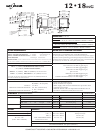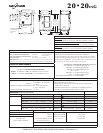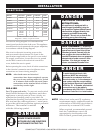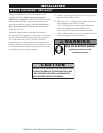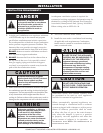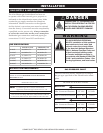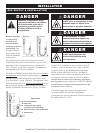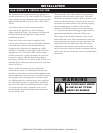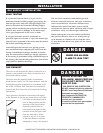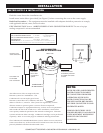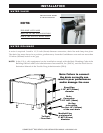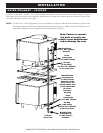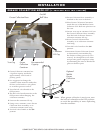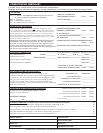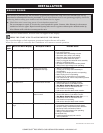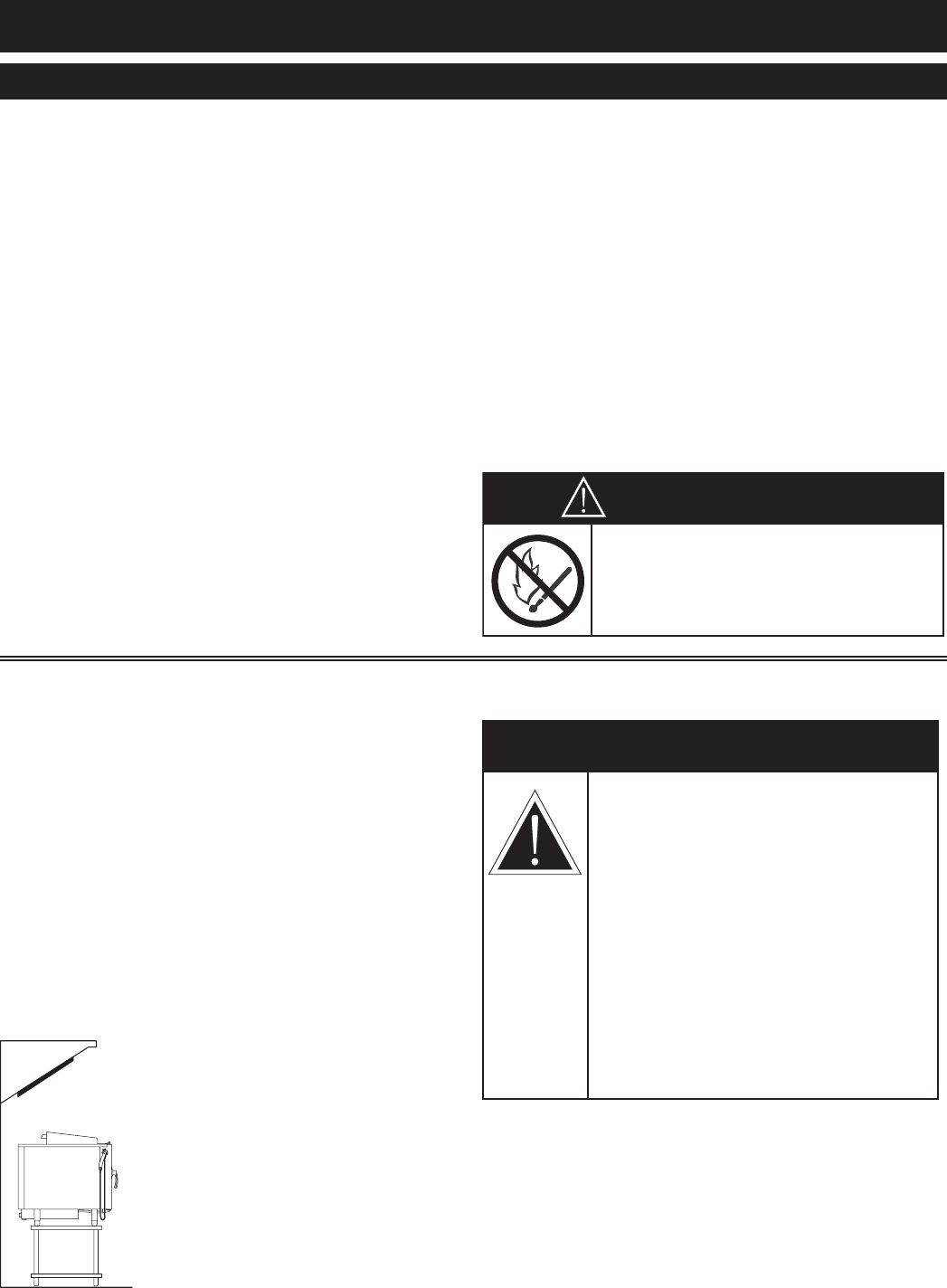
COMBITOUCH
®
ESG SERIES • GAS INSTALLATION MANUAL • MN-29246 • 20.
INSTALLATION
GAS SUPPLY & INSTALLATION
LEAk TESTING
If a pressure leak test above 1/ 2 psi is to be
performed on the building supply gas piping, the
shut-off gas valve and oven inlet gas supply line
must be disconnected from the building supply
piping before conducting the pressure test. Failure
to do so may result in damage to the manual gas
valve, gas components in the oven, or both.
If any gas leak tests are to be conducted at
pressures equal to or below 1/ 2 psi, the manual gas
shut-off valve upstream of the oven must be turned
off before conducting the tests.
Leak testing of the internal oven piping system
was conducted before shipping the oven from the
factory. If additional testing is needed, it should
only be conducted at normal gas supply pressures.
If the testing is performed using combustible gas in
the piping, the leak checking should be done with a
soap solution (bubble checking).
The use of an electronic combustible gas leak
detector is helpful, however, this type of detector
can be oversensitive. Electronic detectors may
indicate false leaks from other sources which
would not be detected when checking with a liquid
solution to verify a no-hazard gas connection.
When starting the oven after initial installation,
the gas lines must be free of air. It may take up
to 30 minutes to eliminate all air from the lines.
If, after this time there is no pilot, call for factory
assistance.
GAS EXHAUST
The oven is not designed for direct connection to a
chimney vent system or for direct connection to a
horizontal exhaust system.
The oven must be installed under a ventilation
hood listed to ANSI/UL 705 (latest edition), and the
installation must be completed in accordance with
the ANSI/NFPA 96-1987, Standard for Ventilation
Control and Fire Protection of Commercial Cooking
Operations.
Oven operators should be instructed with regard
to the hazards of placing any material on top of the
oven that would obstruct the
flow of flue products out the
opening of the flue diverter.
Operators should also be
instructed with regard to the
hazards of hot flue gases and
that any material or items
placed on top of, or in front
of the flue defector could be
damaged or cause a fire hazard.
DANGER
NEVER USE AN OPEN
FLAME TO LEAk TEST.
DANGER
BEFORE STARTING THE
APPLIANCE, MAkE CERTAIN
YOU DO NOT DETECT THE
ODOR OF GAS.
IF THE ODOR OF GAS IS DETECTED:
• DO NOT attempt to light any appliance.
• DO NOT touch any electrical switches.
• Extinguish any open fl ame.
• Use a telephone OUTSIDE THE
PROPERTY & IMMEDIATELY
contact your gas supplier.
• If unable to contact your gas supplier,
contact the fi re department.



